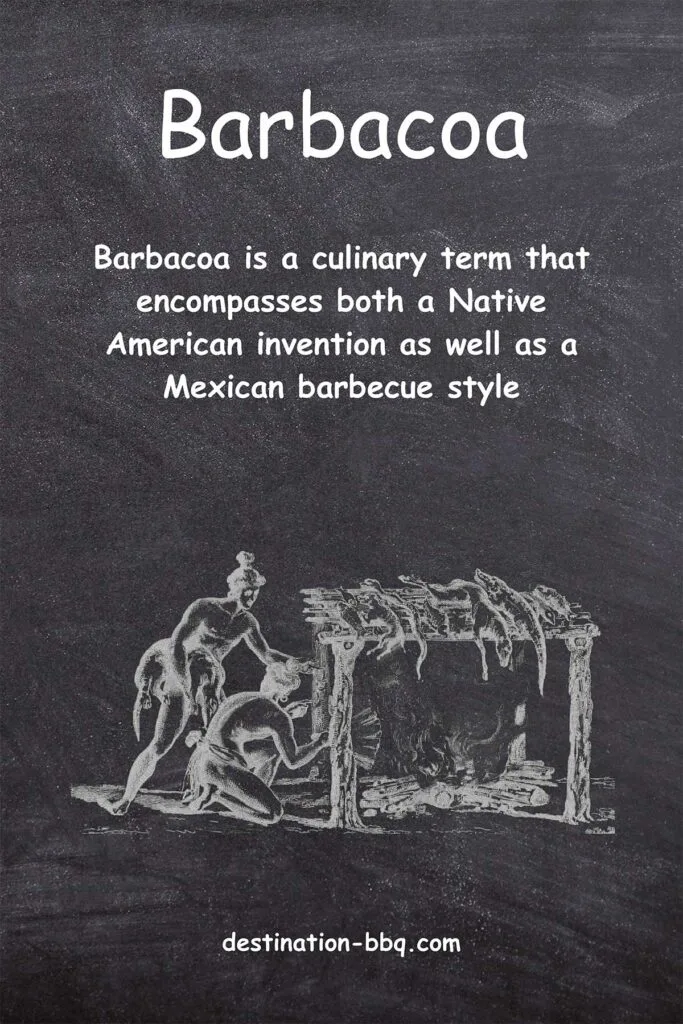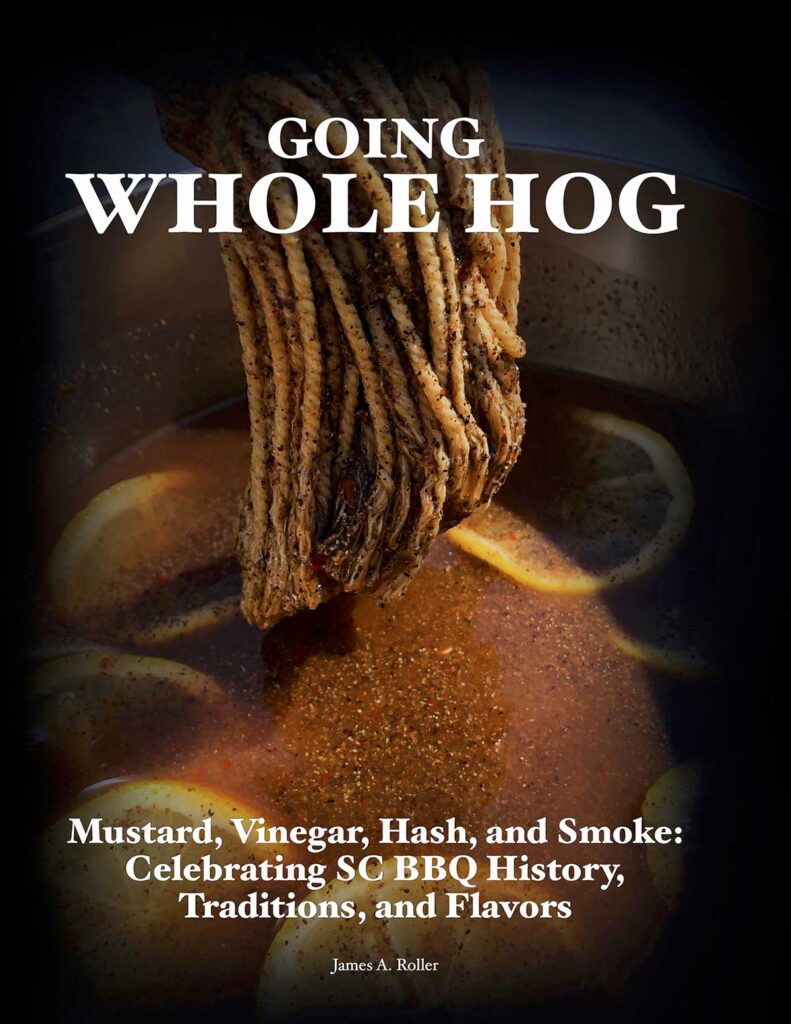
What is a Barbacoa?
Barbacoa is a culinary term that encompasses two distinct meanings. First, it refers to a traditional Native American platform used for cooking (and other purposes), showcasing the resourcefulness and ingenuity of indigenous cultures. Second, it represents a Mexican barbecue style known for its slow-cooked, marinated meats cooked underground in pits, resulting in tender, smoky, and flavorful dishes. The term barbacoa encapsulates the historical, cultural, and gastronomic significance of these two culinary traditions.
Key Takeaways
- Barbacoa encompasses two distinct culinary meanings: the Native American barbacoa served as a versatile platform for cooking (and non-culinary things like beds), while Mexican barbacoa represents a unique barbecue style known for its slow-cooked, marinated meats.
- Native American barbacoa showcases the resourcefulness and practicality of indigenous cultures, with the barbacoa being used for slow cooking and as a raised bed.
- Mexican barbacoa features specific meat selection, such as beef, lamb, or goat, marinated with spices and herbs, cooked underground in pits, resulting in tender, smoky, and flavorful dishes.
- Barbacoa’s popularity extends beyond its historical origins, with modern adaptations and international influences contributing to its enduring appeal in contemporary barbecue culture.
Understanding Barbacoa
Barbacoa is a term that encompasses two distinct culinary meanings, each with its own rich history and cultural significance. Originating from both Native American and, later, Mexican practices, barbacoa evolved into important barbecue traditions. In this article, we delve into the multifaceted nature of barbacoa, shedding light on its origins, cooking methods, and regional variations.
From Indigenous Peoples of the New World
The term “barbacoa” finds its roots in New World cooking practices. Early indigenous cultures developed a device known as a barbacoa. This ancient precursor to modern barbecue pits was crafted using wooden frames. The barbacoa allowed for slow cooking over an open fire, something unique to the world at the time.
Mexican Barbecue
In Mexican cuisine, barbacoa evolved into a distinct barbecue style, cherished for its exceptional flavors and cooking techniques. Traditionally, barbacoa in Mexico involves the slow cooking of meats, often beef, lamb, or goat, in an underground pit. The meat is marinated with a blend of spices and seasonings, contributing to its rich and savory taste.
Comparison
While both the Native American and Mexican interpretations of barbacoa share a connection to slow cooking, they differ in terms of historical context, meat selection, and specific techniques. The Native American barbacoa symbolizes a remarkable early form of slow cooking that influenced subsequent barbecue traditions, while the Mexican style of barbacoa showcases the unique flavors and a different cooking method. Understanding these distinctions provides a deeper appreciation for the diverse range of culinary practices throughout history, but the barbacoa is likely the origin of both the Mexican and American styles of barbecue.
Join us as we delve deeper into the intricacies of barbacoa, exploring its cultural significance, cooking methods, regional variations, and modern adaptations. By the end of this article, you’ll have a newfound understanding of the important legacy of barbacoa, one that echoes through barbecue history.
Barbacoa: Native American Origins
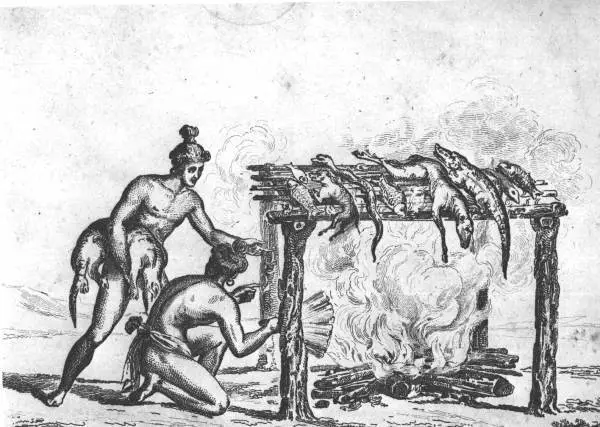
The term “barbacoa” finds its roots in Native American cooking practices, representing an early form of slow cooking that has left a lasting impact on culinary traditions. Indigenous cultures across the Americas and Caribbean developed the barbacoa. It existed when European settlers came to the New World, bringing the pig with them.
Barbacoas are often credited to a sub-tribe of the native Arawak people called the Taino because this is where Columbus and other early explorers first encountered the term. By their arrival, however, the use of the barbacoa was widespread among tribes from what is now North America through the Caribbean and into South America.
The barbacoa consisted of wooden frames, often fashioned from sturdy branches or logs, forming a structure over an open fire. However, this device was not only used for cooking.
Based on reports from other explorers, the word barbacoa actually seems to be the term for the structure itself and could refer to any sort of similarly- constructed loft meant to keep things above ground, such as a bed. By elevating themselves off the ground using a barbacoa, indigenous people could mitigate exposure to dampness, pests, and other potential hazards. Despite its other uses, its unique culinary use is why the barbacoa is widely held to be the origin of our word, barbecue.
The Native American barbacoa played a vital role in communal feasts and gatherings, where large quantities of meat could be cooked to feed members of their community. The slow cooking process imparted a tender texture to the meat, while the smoky flavors added a distinctive touch. This method not only provided sustenance but also fostered a sense of togetherness and celebration within the indigenous cultures, as is common with barbecue today.
Scholars and historians recognize this device as a forerunner to modern barbecue pits. Its influence can be seen in the slow and low cooking techniques that have become synonymous with barbecue traditions today.
Transition from Rack to Pit: The Evolution of American BBQ
The transition from the raised rack of the barbacoa to the earth-dug pit marks an intriguing chapter in the evolution of American barbecue. While the exact details and timing of this transition remain unclear, historical evidence and speculation shed light on the shift from the elevated platform to the ground.
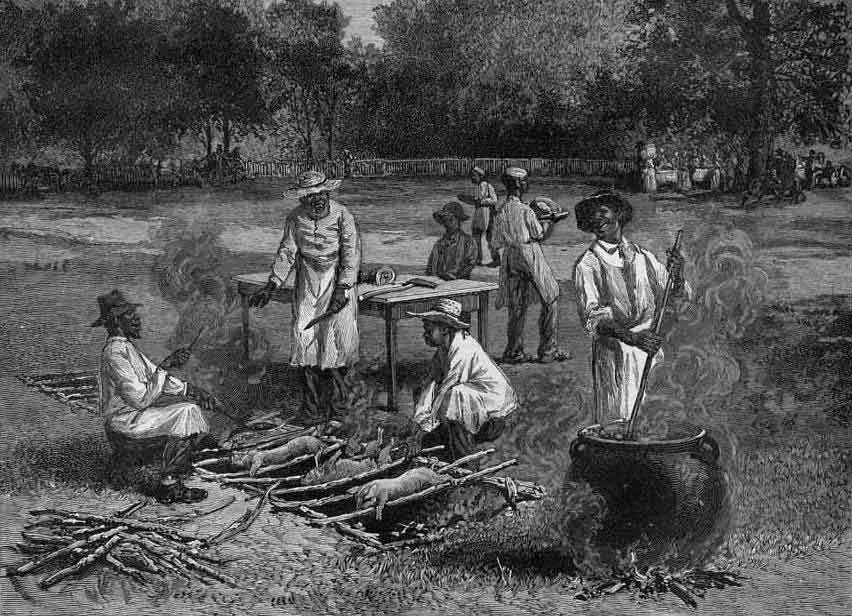
Early illustrations of barbecues in the South reveal earth-dug trenches with green wood saplings supporting whole animals, echoing the rack-like structure of the barbacoa. However, moving the cooking to the ground level, with the coal in a trench below, allowed for the cooking of larger animals. Hogs or even steers would have been challenging to support on a frame of sticks. The move from the rack to the ground offered a more practical and reliable method of cooking, maintaining the distance provided by the rack but lowering the coals by digging a pit.
The terminology associated with barbecue also underwent a transformation. While the phrase “rack-master” was never in our lexicon, you’re certainly familiar with the term “pitmaster.” This shift reflects the change from the raised platform to the earth-dug pit as the dominant method of preparing barbecue.
While there is limited written documentation on the specific details of this transition, the logical and practical decision to move from a raised rack to the ground seems inevitable. This transition laid the foundation for the development of Southern-style pit barbecue, setting the stage for further evolutions and innovations in American barbecue techniques.
The rich history and cultural significance of the Native American barbacoa serve as a testament to the ingenuity and culinary expertise of these ancient cultures.
In fact, that expertise laid the groundwork for the slow-cooking traditions that would later shape Mexican barbacoa. As culinary practices evolved, the Mexican interpretation emerged. This bridge between cultures highlights the fascinating journey of barbacoa and its enduring influence on barbecue traditions
Barbacoa: Mexican Style
In Mexican cuisine, the word barbacoa remains to this day. Instead of referring to the device, however, the word is synonymous with the American term barbecue. Like their American counterparts, those in the Latino community also moved to the ground, but they advanced the concept in a different way, removing the rack altogether and cooking directly in the ground. Rooted in tradition, this Mexican dish showcases a unique approach to slow-cooking meats, resulting in tender, flavorful dishes.
“Barbacoa, in the traditional Mexican sense, involves slow-cooking meats, often sheep, over an open fire, or more traditionally, in a hole dug in the ground and covered with maguey (agave) leaves,” explains Deborah Holtz and Juan Carlos Mena in “Tacopedia”.
A defining characteristic of Mexican barbacoa is the traditional cooking technique Holtz and Mena allude to. The marinated meat is wrapped in agave leaves or banana leaves, creating a protective layer. It is then placed in an underground pit and cooked slowly for several hours. The pit is lined with hot coals and covered with earth, allowing the meat to cook slowly over indirect heat. This method imparts a distinctive flavor while preserving the meat’s tenderness and juiciness.
Throughout different regions of Mexico, variations of barbacoa have emerged, each with its own unique characteristics. For instance, in northern states like Nuevo León and Coahuila, barbacoa de cabeza (made from the head of the animal) is particularly popular. Regional preferences in cuts of meat and local seasonings contribute to the diversity of barbacoa styles across the country.
However, traditional barbacoa is becoming a rarity, as Daniel Vaughn notes in “The Prophets of Smoked Meat: A Journey Through Texas Barbecue,” “Barbacoa, once a weekend specialty in small-town meat markets, is now primarily found in restaurants. Traditional pit-smoked barbacoa is becoming a lost art…”
Today, Mexican barbacoa is enjoyed in various ways. It serves as a delectable filling for tacos, quesadillas, or tortas (sandwiches). Served alongside fresh salsas, chopped onions, cilantro, and lime wedges, this dish brings a delightful element to celebratory feasts, family gatherings, and traditional events throughout Mexico.
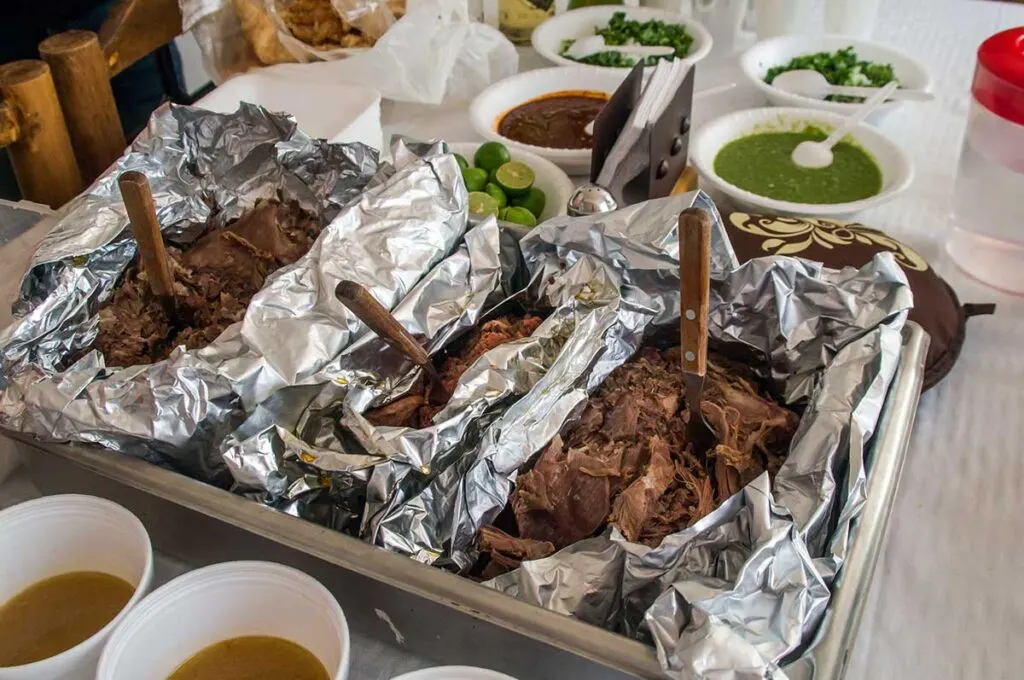
Modern Adaptations and Popularity
Barbacoa, in its various modern forms, has transcended its historical origins and gained popularity in modern times. Its unique flavors, tender textures, and cultural significance have contributed to its enduring appeal within the culinary world.
In contemporary culture, barbecue (or barbacoa) has found a place of prominence. Its slow-cooked meats, infused with flavor from the smoky cooking process, are celebrated by barbecue enthusiasts and food lovers alike. It has inspired chefs and BBQ enthusiasts to experiment with different flavors and techniques, adapting them to suit their own culinary traditions.
Moreover, the popularity of barbacoa’s legacy has extended beyond borders. International cuisines have embraced the concept of slow-cooked meats and incorporated elements of barbacoa into their own culinary traditions. This global diffusion of flavors highlights the universal appeal of tender, flavorful meats prepared through slow cooking methods.
Barbacoa continues to evolve and adapt to modern tastes and preferences while staying true to its roots. Its enduring popularity showcases the enduring legacy of this ancient cooking technique and its ability to captivate the palates of diverse cultures around the world.
